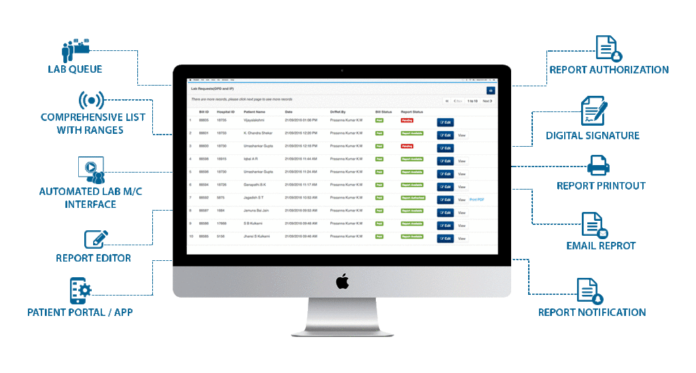Lab management software, a comprehensive solution designed to streamline and automate various aspects of laboratory management, offers significant benefits. By reducing the administrative burden on scientists, lab officers, and researchers it allows them to focus on their core scientific tasks, enhancing productivity and efficiency.
Software for Lab management acts as a centralized hub for sample tracking, inventory control, protocol documentation, data capture, and analysis. This ensures efficient resource utilization and promotes accurate data handling, instilling confidence in the system’s reliability and effectiveness.
Essential Features Of Lab Management Software
Some essential features that you should expect from any good quality Laboratory Management System (LMS) are:
1. Sample & Inventory Control
- Samples tracking based on barcodes along with labeling
- Centralized storage for chemicals, reagents, etc
- Real-time monitoring of stock levels plus automatic reorder points setting
- Efficient organization and easy retrieval or location identification methods for sample materials used in experiments/consumables needed for them, etc.
2. Experiment Protocol Documentation
- Digital repository containing standard operating procedures (SOPs), experimental protocols methods, etc.
- The ability to create and modify protocol versions being controlled/tracked over time;
- Tracking parameters/conditions/results related to tests performed under specified conditions may involve integration among analytical instruments used during the experimentation phase, where information gets captured into database systems connected via appropriate interfaces capable of handling related events at this point.
3. Data Collection & Analysis
- Secure storage arrangement alongside solid organization methodology covering storage space allocation process design itself followed by file formats employed within such units
- Advanced techniques employed during the interpretation stage, including visualization tools associated with analyzing large datasets obtained through experimentation conducted under standardized conditions supported by statistical programs facilitating mining operations done over records collected beforehand Electronic Lab
4. Notebook (ELN):
- Digital infrastructure designed for record-keeping purposes carried out within laboratories, including sharing research findings among peers globally
- Capturing multimedia data like images, videos, and even audio recordings if necessary—Collaboration features may be included so that other team members can access various sections/entries updated by different people working on similar projects simultaneously. Therefore, searchability remains a high priority since it allows users to find specific information easily without necessarily going through individual records manually each time.
5. Project Task Management
- Planning tools are required when managing projects, especially those involving multiple stages where tasks need assigning as well as tracking which ones have been completed or not
- Resource allocation plus capacity planning (for instance, how many resources are available at what stage) can be done using these functions provided by most Project management software packages available today, such as MS Project, etc.
6.Instrument And Equipment Maintenance
- Centralized point providing services meant to manage maintenance activities performed over different instruments kept within labs
- Ensuring that calibration dates do not pass unnoticed, thus reducing chances of getting inaccurate results, thereby increasing reliability standards expected from scientific procedures conducted under controlled environments, using lab management software
7. Compliance Regulatory Support
- Data integrity concerns raised during audits need being addressed adequately through audit trail version controls for easy tracking identification purposes whenever necessary concerning this requirement alone
- Signatures electronic ones along with secure access control mechanisms coupled together while meeting specific reporting requirements stipulated under relevant
These features can be incorporated into lab management software to streamline operations, improve data integrity, facilitate collaboration, and ensure regulatory compliance. As a result, researchers and laboratory personnel can concentrate on their scientific endeavors while ensuring they are efficiently managed and monitored for optimum resource utilization and information accuracy.
Resource allocation plus capacity planning (for instance, how many resources are available at what stage) can be done using these functions provided by most software for lab management packages available today.
















